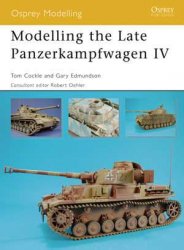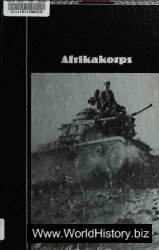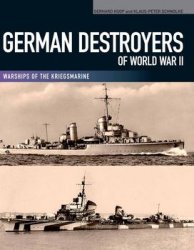Nigeria’s Second Republic started on a very shaky foundation. Four of the five political parties that were registered to contest the elections had the bulk of their support from specific ethnic groups and regions of the country. In fact some were reincarnations of the ethnic and regional based parties of the First Republic. The Unity Party of Nigeria (UPN) led by the frontline Nigerian politician, Obafemi Awolowo, was a reincarnation of the Action Group of the First Republic and had the bulk of its support among the Yoruba. The Nigerian Peoples Party (NPP) led by Nigeria’s First Republic ceremonial pesident, Nnamdi Azikiwe, was a reincarnation of the National Convention of Nigerian Citizens (NCNC) and drew the bulk of its support from the Igbo (though it was able to capture Plateau state in the Middle Belt). The Peoples Redemption Party (PRP) was a reincarnation of the Northern Elements Progressive Union (NEPU) and drew the bulk of its support from Kano State (though by default it was able to capture the Governorship of Kaduna State). The Great Nigerian Peoples Party (GNPP) drew the bulk of its support from Borno and Gongola states. The National Party of Nigeria (NPN), which was more national in character and had a relatively large support in parts of the middle belt and the southern minority states, was more fully entrenched in the conservative Hausa-Fulani northern states. Even then, the NPN was a reincarnation of the Northern Peoples Congress (NPC).
In the 1979 elections, it was only the NPN that was able to achieve a national spread in terms of the plurality of votes, the parliamentary and governorship seats won, but it was not able to win majority of the seats in the national assembly. However, although Shehu Shagari, the presidential candidate of the NPN, was declared the winner of the presidential elections, this was bitterly contested in court by Obafemi Awolowo, the candidate of the UPN who came second. The basis of the challenge was that Shagari did not win one-quarter of the votes cast in at least two-thirds of the states of the federation as provided in the constitution. Before this election, two-thirds of the nineteen states was generally interpreted as thirteen states. But in a highly controversial decision Shagari was declared the elected President on the basis of the fact that he won at least two-thirds of the votes in twelve states and two-thirds of 20 per cent of the votes in the thirteenth state. This greatly angered Awolowo and his supporters who accused the military of bending the rules in other to install their favored candidate hence some critics referred to Shagari as “President by mathematics.” This decision engendered serious opposition from the UPN, as its five elected governors championed the formation of an alliance by the twelve non-NPN governors, the so-called Progressive Governors who were constantly antagonistic and critical towards the federal government. This situation adversely affected inter-governmental relations and proved detrimental for the effective functioning of the Second Republic.
In the face of the opposition by non-NPN legislators, the federal government through various forms of patronage formed working alliances with legislators of the opposition parties in other to get its bills passed by the National Assembly. Up to 1981, when the alliance between the NPN and NPP was still in force, it was relatively easy for the federal government to mobilize the NPP legislators in support of its bills. But the collapse of the alliance in July 1981 resulted in the increased use of patronage and other corrupt practices. One factor that greatly contributed to the intraparty crisis that bedeviled the Second Republic was the competition for access to federal patronage.
The politicians were mainly members of the petty bourgeoisie that thrived on commerce, contracts, and political access. As a result the issue of whether or not to cooperate with the NPN became the most important source of intraparty disputes among the so-called opposition parties. Significantly, the anti-accord groups were usually led by State Governors who had access to state power and therefore patronage, while the proaccord groups were usually led by federal legislators, who wanted patronage from the NPN federal government. Indeed the accord reached by the NPP with the NPN in 1979 was predicated on the appointment of NPP members as federal ministers and to positions in federal corporations and parastatals. It is important to note that the breakdown of the accord in 1981 was as a result of what the NPP perceived as discrimination in the award of contracts, import licenses, and distribution of offices. Even then while the NPP governors championed the breakdown of the accord, some of its ministers and legislators disagreed with the move. Two of the ministers therefore resigned from the party and continued to serve as ministers in the NPN federal government while Senator Anah formed a breakaway faction of the NPP. Similar disagreements over cooperation with the NPN resulted in splits in the GNPP led by Senator Mahmud Waziri and the PRP led by Senator Sarbo Bakin Zuwo.
Within the NPN itself, the issue of the extent to which members benefited from federal patronage became an important source of disagreement. In fact the primary concern with patronage and rent seeking led to the award highly inflated contracts many of which were never executed, or at best very poorly done, to members of the ruling party. The massive corruption of the Second Republic plunged the country into a serious economic crisis, with Nigeria, which had an external reserve of 5 billion Naira in 1979, incurring an external debt of 20 billion Naira by the end of 1983.
The serious political and economic crisis that the country faced had by 1983 greatly delegitimized the NPN federal government. In the face of widespread opposition, the regime resulted to the use of coercion and various forms of manipulation to remain in power. The 1983 elections were therefore conducted under a very charged atmosphere. The attempt of the opposition parties to form an alliance, the Progressive Parties Alliance (PPA) was not very successful. Though there was clear evidence of rigging of the elections by all the political parties, the NPN used its control of state power and institutions to manipulate the outcome of the elections that virtually turned the country into a one party state. Widespread frustration with this “electoral coup” resulted in massive violence in parts of the country, especially in Ondo and Oyo states. The increasing use of coercion by the NPN to keep itself in power created the conditions that led to the military coup of December 31, 1983, which brought the Second Republic to an end.
J. I. Dibua
See also: Azikiwe, Nnamdi; Nigeria: Military Rule, 1983-1999.
Further Reading
Adamolekun, L. The Fall of the Second Republic. Ibadan: Spectrum Books, 1983.
Ake, C. “Introduction.” Africa Development: Special Issue on Nigeria. Dakar: CODESRIA, 1984.
Dibua, J. I. “Conflict Among the Nigerian Bourgeoisie and the Demise of the Second Republic.” Africa Development. 13, no. 4 (1988).
Falola, T., and J. Ihonvbere. The Rise and Fall of Nigeria’s Second Republic, 1979-84. London: Zed Books, 1985.
Joseph, R. Democracy and Prebendal Politics in Nigeria: The Rise and Fall of the Second Republic. Cambridge: Cambridge University Press, 1987.
Okpu, U. “Inter-Party Political Relations in Nigeria 1979-1983.” Africa Spectrum. 2 (1985).
Turner, T., and P. Badru. “Oil and Instability: Class Contradictions and the 1983 Coup in Nigeria.” Journal Of African Marxists. 7 (1985).




 World History
World History









